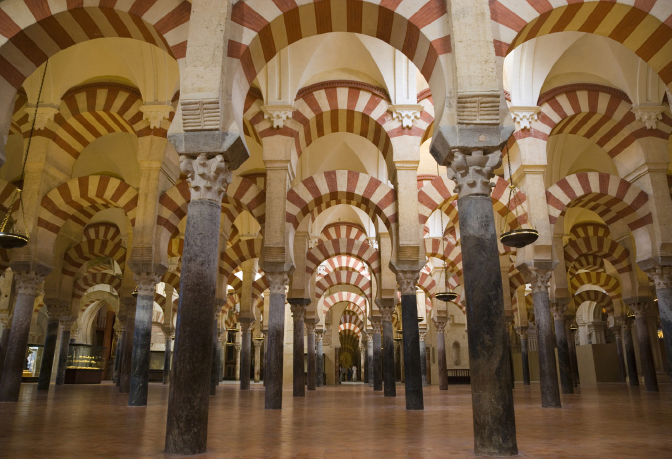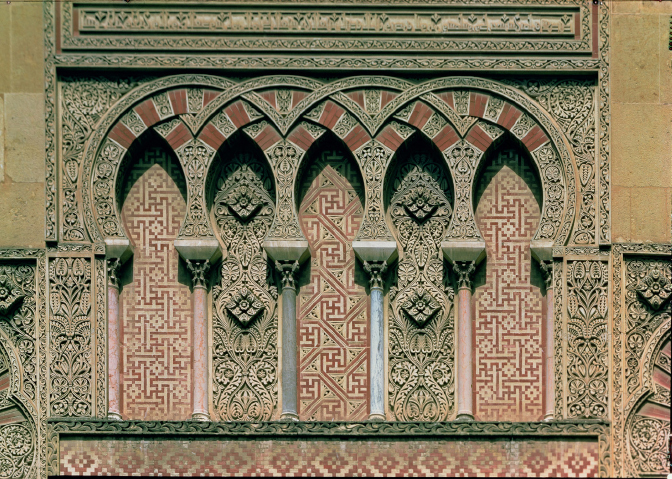Document 9-4: Great Mosque of Córdoba, Spain, and Gate of Al Hakam II, Detail (987)
Geometry and Islamic Design
Unlike the cathedrals of medieval Christian Europe, the great mosques of Muslim cities contained no representations of humans, since the inclusion of such images in a place of worship was considered a form of idolatry. Thus, there are no images of the prophets, no scenes from the life of Muhammad, no pictures of angels or demons, no depictions of God. Despite this limitation, Islamic artists and architects proved remarkably successful at using the mosque as a vehicle for explaining to believers the essence of their faith. The two images included here are of the interior of the Great Mosque of Córdoba, Spain, and a detail of the mosque’s exterior. As you examine them, think about how the mosque’s creators used geometry to convey the Islamic message. What do the design and decoration of the mosque tell you about Islamic ideas about the nature of God?


READING AND DISCUSSION QUESTIONS
- How is the design of the interior of the mosque echoed in the decoration of its exterior? What religious significance might the mosque’s creators have attached to the repetition of geometric motifs?
- How do Muslims describe the nature of God? What connections can you make between this vision of the divine and geometry and mathematics?